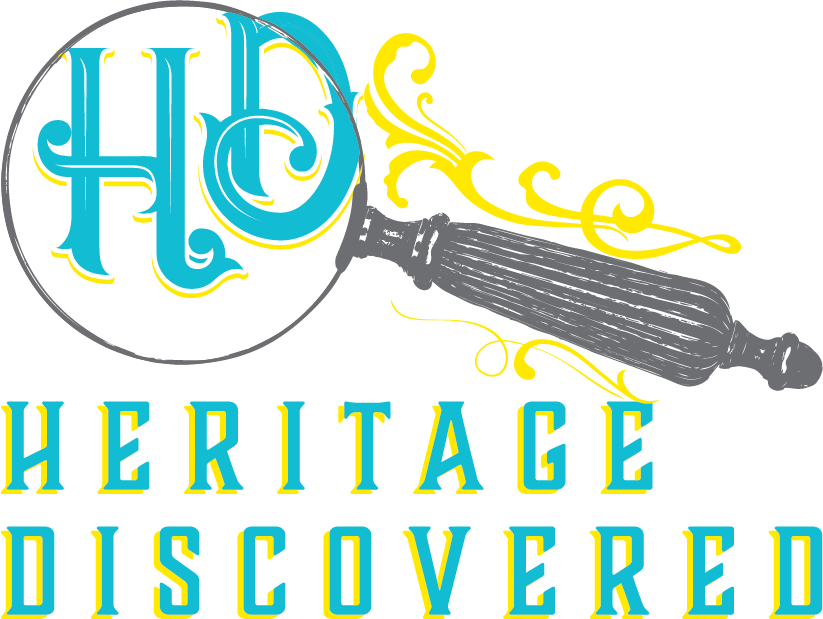Can’t Find Your Female Ancestors? You Need To Try Using Religious Records
*This post may have affiliate links, which means I may receive commissions if you choose to purchase through links I provide (at no extra cost to you). All opinions remain my own.
The women in our family trees can pose a challenge since they created fewer records.
Luckily, there are resources that can help, if you know where to look.
If you’re having trouble researching a woman, religious records are one of the resource collections that can shed a lot of light on our female forebears.
Church, synagogue, and other religious documents are so important in your genealogy research for finding ladies because these were often kept decades, if not hundreds of years, before civil registration existed in many places.
They might be the only place a woman even appears in a record, especially earlier time periods.
And because they can have more information than civil registration records, like maiden names, they can be even more useful.
In this article, I’ll share tips on finding female ancestors with religious records.
What can you learn about female ancestors from religious records?
What you can discover in these resources depends on the denomination. Not all kept records, and if they did, they might not have been too detailed.
But they can be a treasure trove of genealogical information. And because most people were associated with a place of worship, you have a good chance of turning up a mention of her.
You can uncover so much about women from these valuable sources, like:
Maiden names
Parents’ names
Siblings
Birthdays (or at least ages)
Birthplaces
Names of previous husbands
Death date and place
Marriage date and place
Hometowns in her country of origin
When and where she and her family moved to that locality
Her arrival dates from her home country
What church activities she participated in
This Dutch Reformed record from 1892 shows family groups, with birth and baptism dates and minister names.
Related posts:
How to Trace Women in Your Family Tree with Veterans’ Pension Records
Using Probate Records to Find Female Ancestors
How To Find And Get To Know Female Ancestors With Community Cookbooks
Types of religious records with information about women
There are, of course, many religions, and their record-keeping practices are different. These also vary from place to place and from time period to time period.
You may be more likely to come upon the ladies in your family in church papers than other denominations. Churches kept a wide variety of documents, some of which go back hundreds of years.
Here are some resources that can help you uncover information about the women in your tree (in no particular order):
Metrical books (registers of births, marriages, and deaths)
Marriage banns
Baptisms
Confirmations
Communions
Christenings
Funerals/burials
Bris records
Marriage contracts
Bar/bat mitzvahs
Membership lists
Annual reports
Board and congregation meeting minutes
Committees and clubs
Newsletters
Faith-based orphanage documents if your ancestor was an orphan
Family registers. Some churches kept notes of entire family groups.
Pew rentals
Published histories of ministers or churches. You can learn about members of the congregation and other facts, as well as the church history.
Minister’s and other officials’ papers. Many kept their own notes of marriages they performed, and other events. Your family may be mentioned.
Related posts:
How and Why to Research Your Collateral Ancestors
How to Strengthen Your Cemetery Research Skills to Find Clues About Your Family
How to identify which place of worship your female ancestor joined
But before you can uncover women in these collections, you need to identify which place of worship she attended.
I know that may feel a little overwhelming. How can you figure out which place she went to, especially if she lived in a larger town or city?
Some tips to find which church, synagogue, or another place she may have been a member of are:
1) Ask your relatives if they know what denomination the family was, or which church the family went to
2) Take a look at the papers you already have at home. You may find clues on them.
3) Consider their ethnicity. Certain ethnic groups tended to have the same religion, like Greek Orthodox. Irish and Italians tended to be Catholic. Scandinavians were often Lutheran. Germans could be several religions, but it was often regional from where in the Empire they were from.
4) Consider the region and where people were settling. For example, the Hudson Valley was settled by Dutch Reformed followers, Louisiana and Florida by Catholics, and Upper Midwest states like Minnesota by Scandinavian Lutherans.
5) Learn when the church of their denomination began in their area. You can find this through local history books or city directories. Maybe they had to travel to another nearby town to attend services. My ancestors in Deerfield, Massachusetts didn’t have a Catholic church in the area, so they went to nearby Greenfield. Another branch lived in Concord, Vermont and attended a church in St. Johnsbury.
6) What was the nearest house of worship for that denomination to where they lived? Again, you can use local histories and city directories, combined with maps, to see which house of worship was closest to where she was living. That may point you to the correct place.
7) Identify the priest/minister/rabbi/etc. on any documents you have. Then research them to see what place of worship they presided at. I did this with a minister who appeared in many marriages for my family, which led me to his papers at the local historical society.
8) Find her obituary. While not every woman had an obituary, those that did may give clues on what church or religious institution she was a part of.
9) Check the newspapers. Women often appeared in social columns, as well as other articles. Once you find her in a gossip column or other mention, evaluate it to identify any hints on where she attended services. Even the smallest blurb may tell you which church she belonged to.
Related posts:
Where to Find Records for Emigrants to the US
What are Naturalization Records and How Can They Support Your Research?
What to Know About Alien Registration Files and Where to Find Them
Ideas on where to find faith-related resources for your female ancestor
To locate women in religious resources, you first need to learn what types of records were typical for your ancestor’s religion.
Once you know that, you can better search for them, and prioritize what to look for.
Many resources like parish register books have been digitized and are online. For others, like newsletters and minutes, you may have to dig a lot harder and do in-person research at archives and libraries.
Also note that even in the US, you may come across sources in your ancestor’s native language. It’s not uncommon to see documents in German, Swedish, or other languages, especially in earlier times.
1) FamilySearch is a good place to look for church and synagogue collections.
2) Ancestry has many parish registers, as well as membership lists, family histories, and other helpful collections.
3) Even Fold3 has some faith-related records, including registers. They also have photographs and postcards so you can see what their church or place of worship looked like.
Although this is a little hard to read, this Quaker marriage record from 1813 names the bride and her parents and where they were from.
4) Check at the local level. When you figure out which place she was a member of, contact them to see what files they may have. Keep in mind that they may not still be there. Documents get transferred and sometimes go to a larger, regional church or other place.
5) Look for denomination-specific archives or historical societies. One example is the Presbyterian Historical Society. Look for the headquarters of the church in the US or country she was from and see where they keep their archives. Many have original, undigitized documents.
6) See what books are available. Some church sources have been transcribed and published, and there are guides to using church records.
How To Find Your Family History in US Church Records
Mastering Family, Library and Church Records
Naugatuck, Connecticut Congregational Church Records 1781-1901
If this post was helpful, please consider “buying me a coffee”. Tips through Ko-Fi help me create more content like this for you! Thank you for supporting my small business!
Final thoughts
Researching the ladies in your family tree can be a challenge sometimes. Most of us have hit a brick wall with at least one woman. Religious records are a great resource for discovering details about them that may not exist anywhere else, like their hometown or their maiden name. Many church resources are online now, especially for births, marriages, and deaths. For other, less common types of papers, you may have to cast a bigger search net.
What have you tried to find the women in your family that have been a brick wall?








